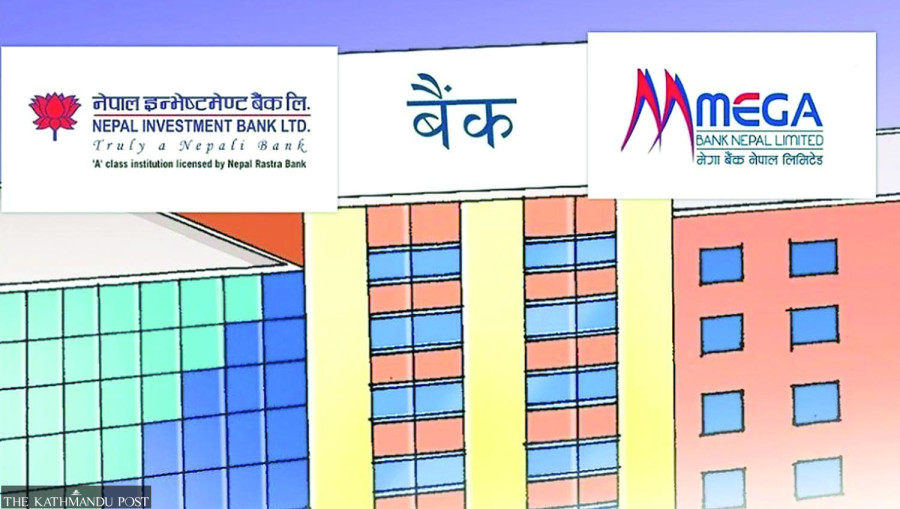Columns
The monetary policy’s upshots
The depreciation of the Nepali rupee versus the US dollar will cost us more while repaying foreign loans.
Nischal Dhungel
The Nepal Rastra Bank (NRB), the central bank of Nepal, took an accommodating policy stance during the pandemic to support households and businesses. The average inflation rate in fiscal year (FY) 2020/21 stood at 3.6 percent and doubled to 6.32 percent in FY 2021/22. For the first six months of the current FY 2022/23, it stands at 7.2 percent. Inflation has significantly increased due to the detrimental effect of the supply chain post-Covid19 pandemic and the Russia-Ukraine war. Rising inflation raised the cost of fuel and raw materials, causing production costs to skyrocket. As a result, the output capacities of both small and large-scale industries have decreased. The government imposed an import ban to safeguard the diminishing foreign exchange reserves, but it lifted the ban recently as the demand for goods and services increased amidst economic recovery.
These factors contributed to the first half of the current fiscal year’s revenue collection falling short of expectations. The revenue collection for the first six months of mid-January 2023 decreased by 15 percent compared to last year. The Finance Ministry reduced the federal government’s budget by 20 percent because of its inability to generate revenue as projected. The increased liabilities for wages, pension, social security, and subsidies for chemical fertiliser and disaster management have strained ongoing government expenses. The government needs to pay the interest on international and domestic loans. The depreciation of the Nepali rupee versus the US dollar will prove expensive to re-pay foreign loans.
World Bank and IMF support
The International Monetary Fund (IMF) approved $395.9 million as part of the Extended Credit Facility (ECF) Arrangement for Nepal. The ECF provides financial support to nations with a persistent balance of payments issues. This arrangement would help the government lessen the pandemic’s effects on people’s health and economic activity, safeguard vulnerable populations, maintain macroeconomic and financial stability, and promote long-term growth and poverty reduction. The program will encourage significant funding from Nepal’s development partners and help reduce funding shortfalls. These actions supported a subsequent credit boom by cutting loan rates early in the pandemic. To aid Nepal’s tenacious recovery from the Covid-19 pandemic and promote sustainable growth, the World Bank approved a $150 million development policy credit. The Nepal Programmatic Fiscal Policy for Growth, Recovery, and Resilience Initiative, funded by the World Bank, will work to enhance the country’s institutions and laws, especially those governing debt management, public capital investment, and tax and customs systems.
Effect of monetary policy
At the beginning of FY22, NRB monetary policy aimed to strike a balance between tightening needed for economic and financial stability and assistance for the nascent economic recovery. The NRB’s main policy targets are maintaining the policy floor of foreign exchange reserves covering seven months of imports and setting the inflation ceiling at 7 percent for the year FY 2022/23. The goal of monetary policy is to limit total credit to the private sector by 12.6 percent and total money supply by 12 percent for FY 2022/23. NRB raised the cash reserve ratio (CRR) from 3 percent to 4 percent. As a result of the credit boom, imports peaked in the first half of FY22, and foreign exchange reserves declined. The NRB increased its policy repo rate targeting both credit demand and supply. A change in monetary policy was in response to worries about faster-than-expected credit expansion, the growing import bill, dwindling reserves, and rising inflation as loan growth soared beyond estimates in the first half of FY22. To bring down inflation and discourage credit lending, the NRB increased the interest rates. The weightage average interest rate for inter-bank rose from 4.76 percent in mid-January 2021 to 7.48 percent in mid-January 2022. Similarly, weightage average interest rates for lending increased from 9.44 percent in mid-January 2021 to 12.79 percent in mid-January 2022.
A credit constraint occurred as the additional liquidity injections weren’t enough to make up for the drop in loanable funds. By the end of FY22, private sector credit had fully returned to FY21 levels as a proportion of GDP due to the higher lending interest rates offered by commercial banks to borrowers, which increased from 8.5 percent to 11.6 percent between mid-July 2021 and mid-July 2022. Credit to the private sector stabilised at comparatively higher prices, falling from 102 percent of GDP at the end of FY21 to 101.5 percent of GDP at the end of FY22. The NRB injected a total of Rs3094.76 billion in liquidity until mid-January 2023. NRB provided Rs318.09 billion through a repo, Rs83.85 billion through an outright buy auction, and Rs2692.83 billion through a standing liquidity facility (SLF).
The NRB introduced a merger and acquisition policy with the aim of strengthening financial stability. After the mergers of the commercial banks, the number of commercial banks decreased from 27 in mid-July to 22 in mid-January 2023. Micro-finance institutions decreased from 70 in mid-July to 64 until mid-January 2023. The central bank of Nepal mandates that banks maintaining higher paid-up capital help reduce the number of banks and financial institutions. Bank and financial institutions’ (BFIs) private sector credit increased by Rs137.33 billion (3 percent) during the first six months of FY 2022/23 compared to a growth of Rs492.63 billion (12.1 percent) during the same time last year. Out of the total outstanding credit held by BFIs until mid-January 2023, 67.2 percent went to real estate and 12.2 percent to current assets (such as goods used in agriculture and non-agriculture).
BFI soundness
Despite liquidity restrictions, indicators of BFI soundness were high. The average capital-to-risk-weighted assets ratio, which measures the sufficiency of bank capital, remained more elevated than the legal requirement of 11 percent. After massive credit expansion, NRB raised interest rates which is also the byproduct of the misuse of loans. In addition, due to the lengthening of loan repayment schedules as part of the central bank’s response to Covid-19, the overall number of BFIs’ nonperforming loans (NPL), defined as loans that are past due by 90 days or more, also marginally decreased. As of mid-July 2022, commercial banks had an NPL ratio of 1.3 percent, development banks had an NPL ratio of 1.5 percent, and finance businesses had an NPL ratio of 7 percent. Even though these numbers are encouraging, some swift forbearance measures should be in place to assess the asset quality in the banking sector. Banks are issuing fresh disbursements to reduce the level of nonperforming assets.
Nevertheless, given the adverse economic effects of Covid-19, the IMF should closely monitor the system to ensure NPLs are accurately measured and that all banks’ provisioning and capital are still sufficient. The NRB should improve the regulatory environment to offer precise restructuring guidance to address BFI assets and loan quality. NRB issued Working Capital Loan Guideline 2079, which mandates banks to issue working capital loans secured by the current assets. Credit Policy Guidelines of the licensed institution shall clearly mention the margin and adequacy of the existing assets required for the security. Hence, the NRB should encourage banks to monitor borrowers’ creditworthiness continuously and establish asset categorisation and reclassification criteria that accurately evaluate banks’ asset quality. Lastly, Nepal should facilitate bank financing to productive businesses, invest in infrastructure and education, and adopt digital technology and research and development.




 15.12°C Kathmandu
15.12°C Kathmandu















